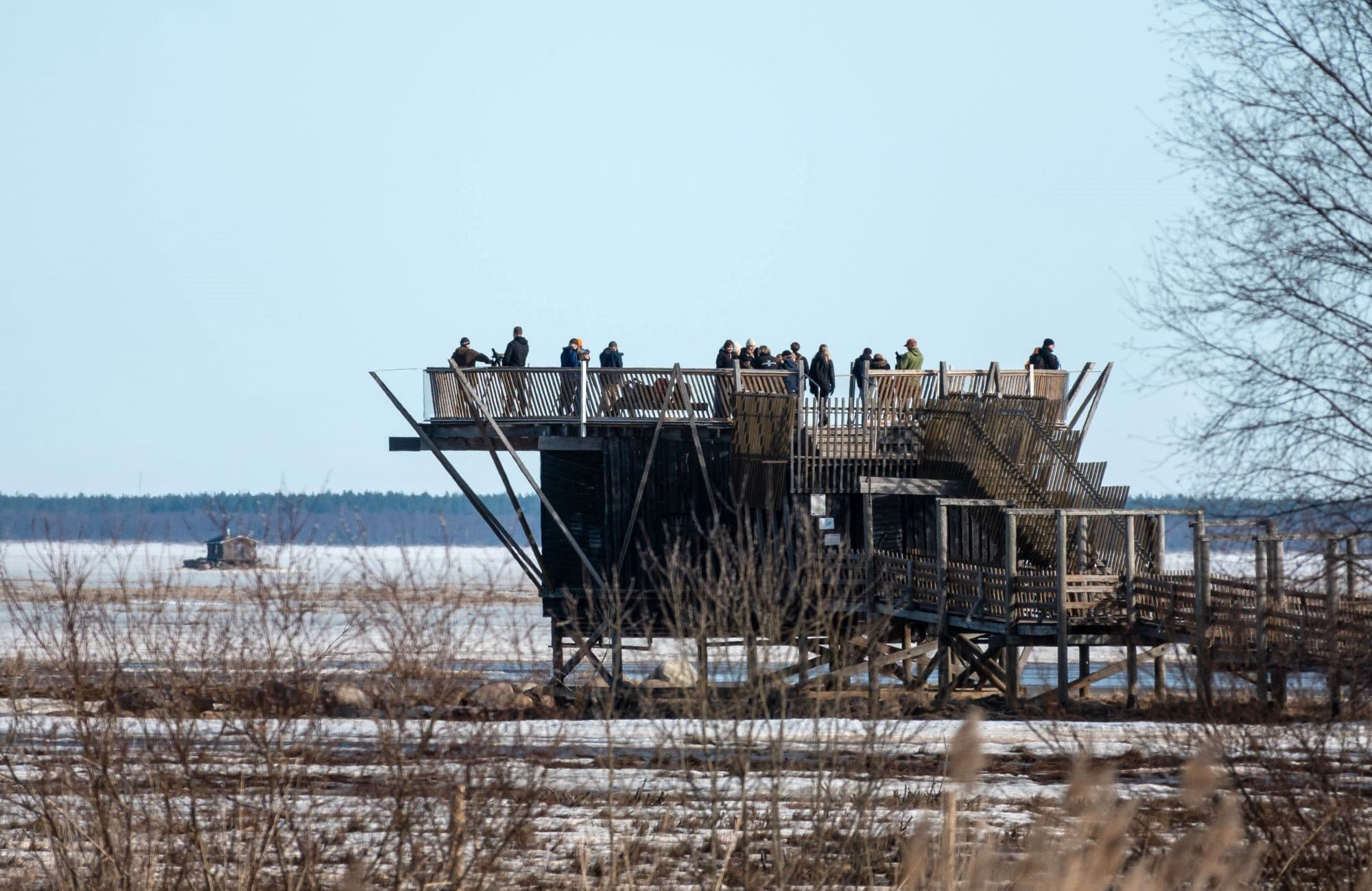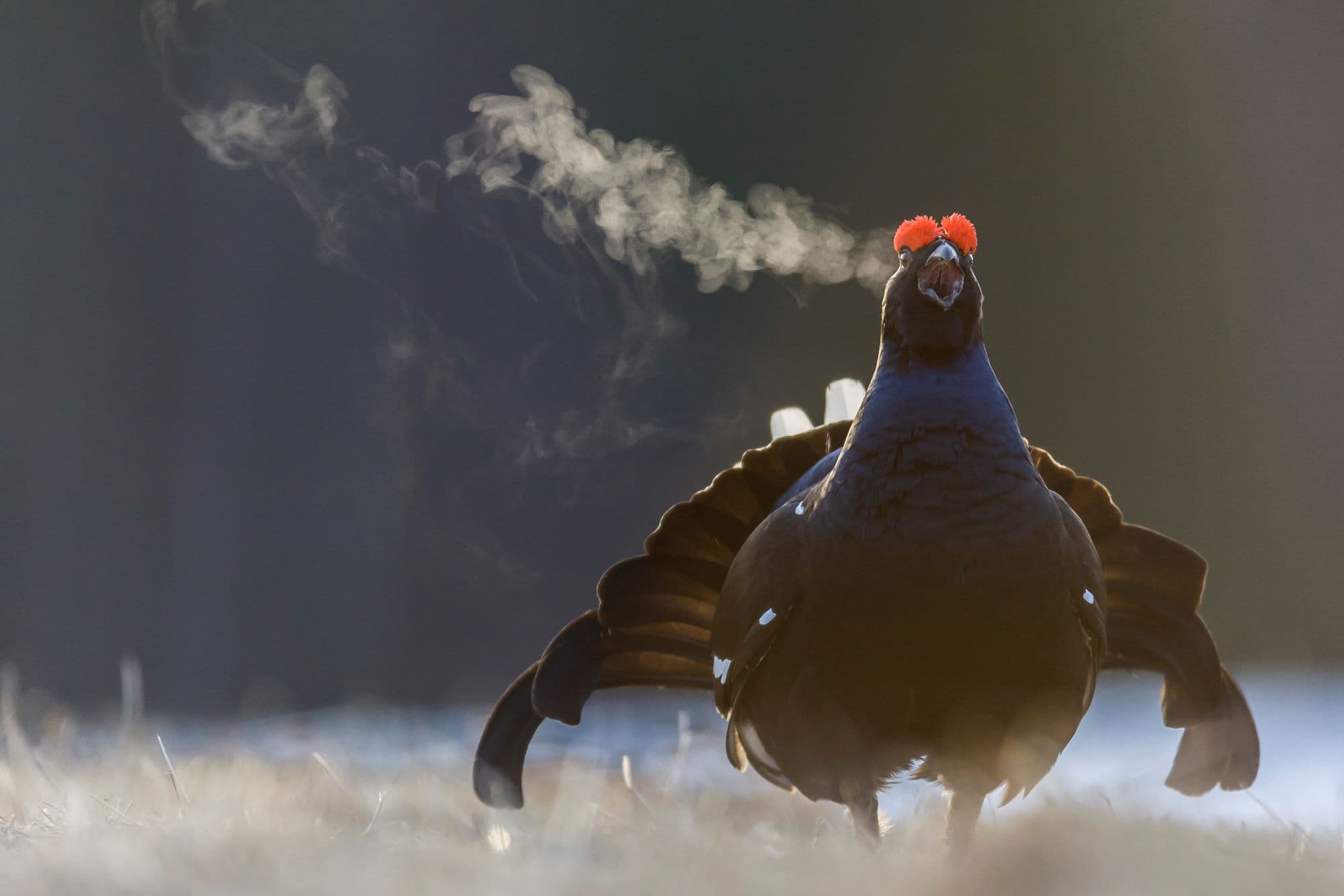Spring is the time for birds – let's move in nature with respect
Early spring brings nature's awakening – warmth increases, and birdsong fills the air. For birds, spring is a busy time: during courtship, they seek a mate, and once nesting begins, they need peace and quiet. As a hiker, you can enjoy the soundscape of spring and birdwatching, but at the same time, it is important to move through nature in a way that does not disturb birds during their sensitive breeding phase.
Text:
Joni Partanen works as a customer advisor at the Liminganlahti Nature Centre.
Warm spring weather can lead to birds nesting earlier than usual. This means that a nature-conscious hiker can adapt to the current situation and ensure that birds have peace for courtship and nesting well in advance.
Why are birds' courtship and nesting sensitive to disturbances?
Birds use a lot of energy for reproduction. Courtship and nesting are critical phases in their life cycle, and disturbances can affect the success of breeding in various ways:
- Birds engaged in courtship focus on attracting a mate – if they constantly have to watch out for humans, their pairing may be disrupted.
- A bird about to nest may abandon its nesting site if it feels unsafe.
- A sudden disturbance may cause eggs or chicks to be left without parental care, leaving them vulnerable to cold or predators.
When moving in nature, it is good to observe your surroundings and pay attention to bird behavior. Due to the mild winter in the south, some migratory birds have not even left, and various duck species, for example, have overwintered in Finland. The first signs of spring migration have already been observed, but the number of migrating birds has remained moderate.
Many bird species also tend to use the same areas year after year as resting and feeding grounds during their migration. These include certain coastal bays, for instance. It is important to avoid moving in such areas to ensure that birds can rest and feed undisturbed during their energy-intensive migration.
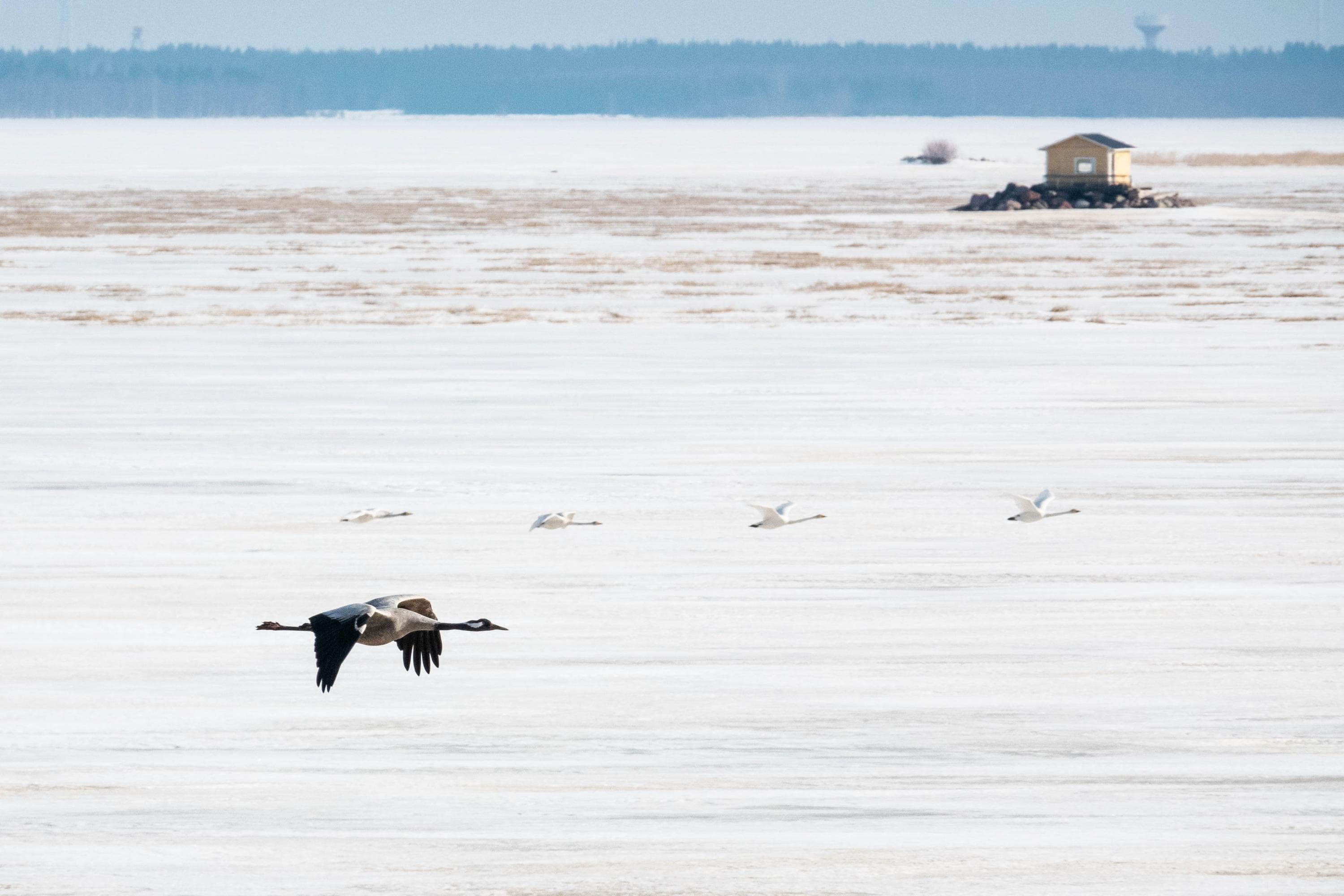
How to respect birds while hiking
Avoid moving in sensitive nesting areas
Certain areas are particularly sensitive to disturbance during birds’ courtship and nesting periods. These can include nesting islets in the archipelago. National parks, protected areas, and nesting islands may be restricted during spring and summer.
Many hiking destinations have seasonal movement restrictions in place to protect nesting birds. Due to warm weather, nesting may begin earlier than usual in many areas, so ensure birds have a peaceful nesting season well in advance.
Keep your distance from bird courtship displays
In spring, you may hear the bubbling sounds of black grouse (Tetrao tetrix) or the powerful courtship calls of capercaillies (Tetrao urogallus) in the forest. These spectacular moments are a joy to witness, but disturbing the birds can disrupt the courtship and affect mating. If you hear courtship calls, keep your distance and admire the birds from afar if it is possible without disturbing them. Do not approach courtship areas or stop too close to observe them.
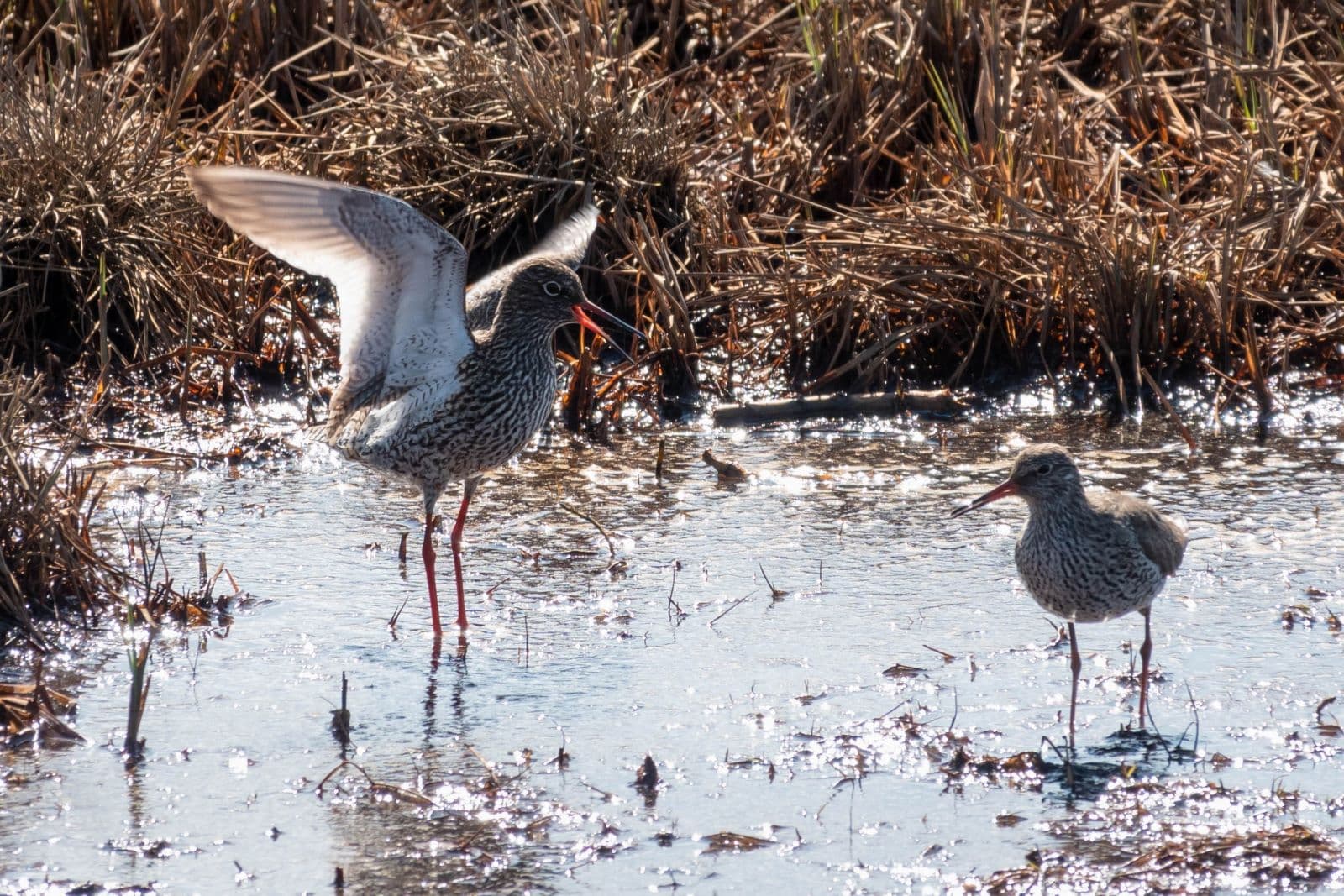
Avoid loud noises and stay on marked trails
Nests can be surprisingly well hidden – for example, many waterfowl nest in shoreline vegetation, and many small birds hide their nests on the ground or in bushes. Some waders nest in open shorelines, but their nests can be extremely difficult to spot. If a bird behaves restlessly or tries to lure you away from an area, it is likely protecting its nest – retreat calmly.
Birds react to human voices and the movement of pets. Stay on marked trails and keep pets leashed. As spring progresses, the early nesting phase may already begin in late March, making it even more important to stay on designated paths.
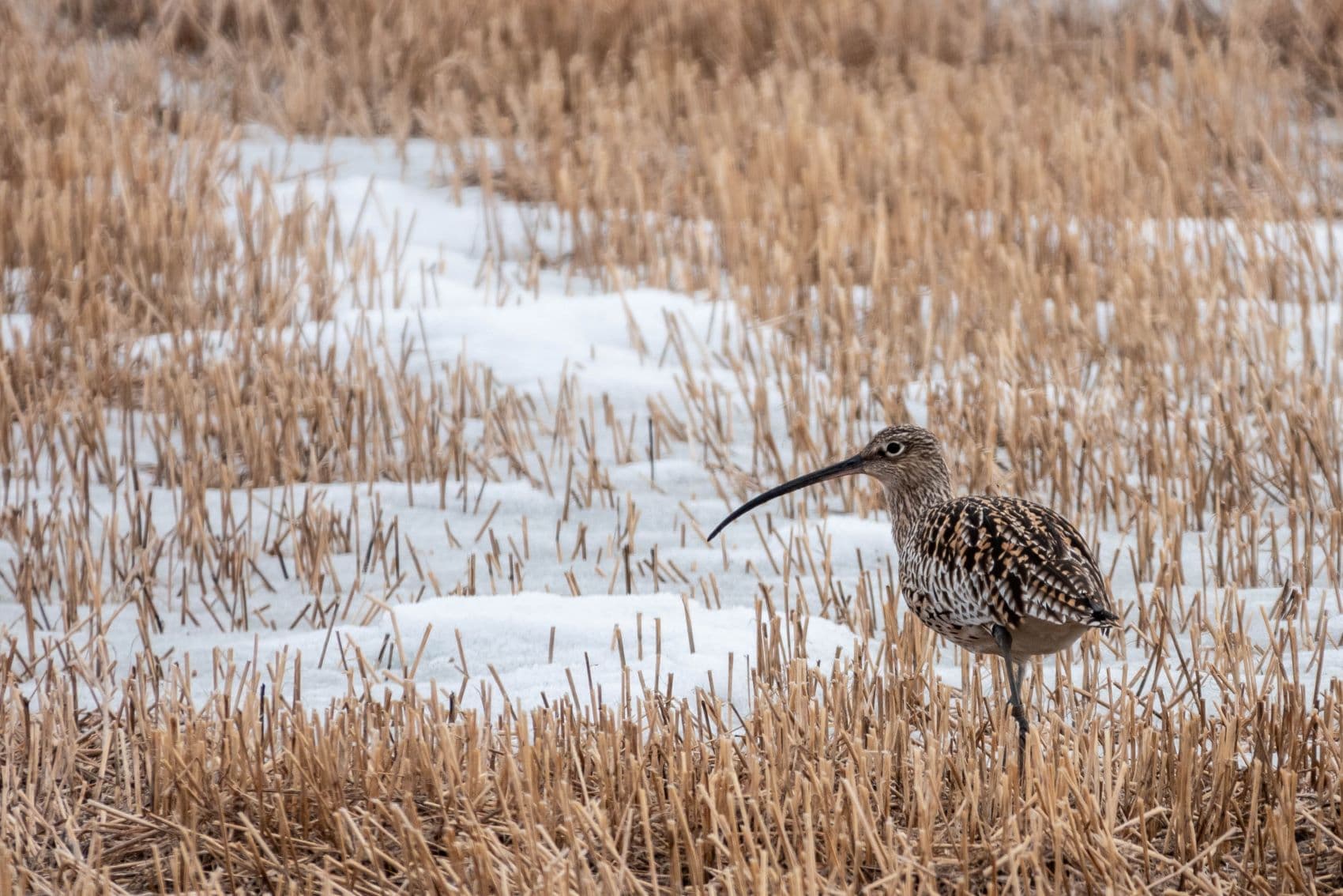
Where and how can you observe birds without disturbing them?
Would you like to see and hear the magnificent spring birdlife without disturbing them? Here are some tips for responsible birdwatching:
- Birdwatching towers are designed to offer a good view of nesting areas without disturbing birds. Places like Liminka Bay, Puurijärvi and Isosuo National Park, as well as towers along the coastlines of the Bothnian Sea and the Gulf of Finland, are excellent locations for spring birdwatching.
- Listening to bird songs – simply enjoy the natural concert around you. In spring, you might hear the bright song of a chaffinch (Fringilla coelebs) or the calls of a whooper swan (Cygnus cygnus).
- Capture the moment from a distance – if you want to take pictures of birds, use a zoom lens or a spotting scope. Approaching birds too closely may cause them to flee and interrupt their essential nesting activities.
Let’s respect nature – let’s share the spring with the birds!
